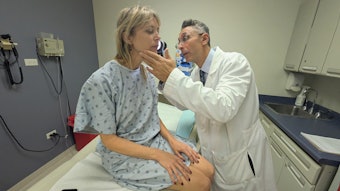
In the realm of health, sugar’s stock value has dropped precipitously in the past decade. In addition to tooth decay, sugar, more than fat, now is shouldering blame for the obesity epidemic and inflammation leading to systemic diseases.
Sugar increases the speed and degree to which skin looks and feels older via a process called glycation. Sugar molecules in food attach themselves to proteins in the body, such as collagen and elastin, or peptides, says board-certified dermatologist Shasa Hu, MD, associate professor of dermatology at the University of Miami and co-owner of Bialife.com. That makes the proteins stiff and inflexible. When a protein has extra sugar, or is glycated, advanced glycation end products (AGEs) mark that particular protein for damage or higher metabolization by our bodies, she continues.
“Glycation is not as well-known as oxidative stress, but we know from basic science research that glycation is an important process that can be induced by oxidative stress or inflammation, and through dietary exposure to alcohol and high-glycemic diets, which are heavy in processed carbs and sugar,” says Dr. Hu.
Sugar is not the only culprit in causing AGEs. More than a century ago, Louis-Camille Maillard discovered that heating milk and amino acids turned the liquid a yellow-brown color. The three stages of chemical reactions in which sugar and amino compounds brown are called the Maillard reaction, frequently described as a “nonenzymatic browning reaction.”
Virginia Pelley is a freelance writer based in Tampa, FL.











